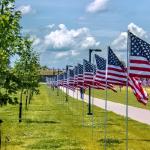Responding to a question on the potential of art to transform at Jewish Book Week last year, Palestinian-Israeli writer Sayed Kashua commented: “Sometime people talk about culture and literature and art as something that can connect people together…to bridge between cultures. I hate bridging between cultures. It should be tunnels.”
I was reminded of Kashua’s undercutting of too-easy attempts to celebrate the transformative potential of art by the recent revelation of a 3D cartoon which hopes to ease ethnic tensions between Muslim Uighurs and Han Chinese. The cartoon tells the story of the Fragrant Concubine, a Uighur princess who married an 18th-century Chinese emperor. James Millward, professor of Chinese and Central Asian History at Georgetown University has this to say about the cartoon:
“From a westerner’s point of view, trying to patch over extreme ethnic tensions with a cutesy cartoon portrayal of a minority woman might seem problematic—like screening Disney’s Pocahontas after Wounded Knee.”
![Image of the "Fragrant Concubine." [Source].](https://wp-media.patheos.com/blogs/sites/92/2014/09/bridge1-180x300.jpg)
There seems to be a “positive image” at the end of every culturally-connecting bridge. And that’s the problem. All the warm, feel-good talk of honoring diversity and understanding one another can often seem very distant from the wrenchingly violent, confusing reality – in particular in the context of the Middle East.
Take, for example, the two-year event series “THIS Bridge: Arab, Middle Eastern & Muslim Artists,” spearheaded by Lebanese-American theater artist Andrea Assaf, founder of Art2Action, where public events will be taking place throughout 2014-15 at the University of South Florida as part of “a series that speaks to what it means to be Arabic or Islamic in today’s society — with an emphasis on women who are either or both.”
According to this article:
“‘THIS Bridge’ will explore such issues around repression, misrepresentation and other injustices by collaborating with other academics, developing a new, cross-listed Special Topics course; stage plays and literature by Arab and Muslim writers, and facilitate ongoing workshops for Arab, Middle Eastern and Muslim student associations.”
Although the program inevitably includes the go-to staple of the Middle East cultural bridging menu, dancing in semi-Orientalist gear, the article notes that the university will be “undergoing a socio-cultural immersion that goes beyond language, food choices and taboos.” “Immersion” in the hopes that this will lead to increased understanding is what Assaf seems to be aiming for in her comments on the program:
“Islamophobia and anti-Arab racism certainly existed long before 9/11, but in the years since, it has been particularly acute…Now we have an entire generation whose political formation has taken place post-9/11. And this is what makes it urgent to increase understanding of Arab, Middle Eastern, and Muslim cultures, andto build bridges across identities.”
![Image from the THIS Bridge project. [Source].](https://wp-media.patheos.com/blogs/sites/92/2014/09/bridge2-300x180.jpg)
The series attempts to deal with these complex predicaments through having a longer time-frame rather than a frantic burst of positive images that are soon forgotten. Iranian-American stand-up comedian Negin Farsad, who performed as part of THIS Bridge, makes this point: “What’s really smart about THIS Bridge…is that it’s two years long — it’s consistent, it’s frequent and it’s a focused effort…I think with that kind of ferocious programming you can really move the needle.” Another aspect supporting this kind of engagement is that the event planners haven’t limited the series to rah rah-ing art and culture. Throughout the series, performances will followed by “opportunities for academic discourse and community discussions about gender, including contemporary Arab and Muslim feminisms, identity and U.S. policy.”
All of this sounds amazing – I know I would love to attend many of the events planned, despite the need for realistic expectations of how far any of this can transform anything. Returning to Kashua’s comments, I find them all the more poignant in the wake of this summer’s one-sided war against Gaza. Kashua’s very successful sitcom Arab Labour, getting the Israeli public to laugh and connect with Arab characters, doesn’t seem to have had much effect on public opinion, perfectly demonstrating that sometimes, bridging between cultures doesn’t do much to actually connect them. We need sustained one-to-one engagements to be affected personally, not rainbow bridges delivering positive image pots of gold.











